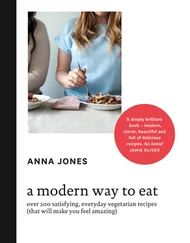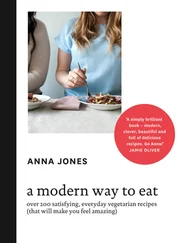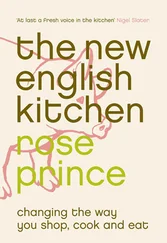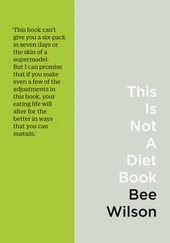Talking about what has gone wrong with modern eating is delicate, because food is a touchy subject. No one likes to feel judged about their food choices, which is one of the reasons why so many healthy eating initiatives fail. The foods that are destroying our health are often the ones to which we feel the deepest emotional connection because they are the stuff of childhood memories. Some say we should never speak of ‘junk food’ because it is a pejorative term to use about someone else’s pleasures. But when poor diets become the single greatest cause of death in the world, I think we are allowed to be pejorative – not about our fellow eaters but about the products that are making people so unwell. 5
The rise of obesity and diet-related disease around the world has happened hand in hand with the marketing of fast food and sugary sodas, of processed meats and branded snack foods. As things stand, our culture is far too critical of the individuals who eat junk foods and not critical enough about the corporations who profit from selling them. We spend a lot of time discussing unhealthy foods in terms of individual guilt and willpower and not enough looking at the morality of big food companies who have targeted some of the poorest consumers in the world with products that will make them sick, or the governments that allowed them to do so. A survey of more than three hundred international policymakers found that 90 per cent of them still believed that personal motivation – aka willpower – was a very strong cause of obesity. 6This is absurd.
It makes no sense to presume that there has been a sudden collapse in willpower across all ages and ethnic groups and each sex since the 1960s. What has changed most since the sixties is not our collective willpower but the marketing and availability of energy-dense, nutrient-poor foods. Some of these changes are happening so rapidly it’s almost impossible to keep track. Sales of fast food grew by 30 per cent worldwide from 2011 to 2016 and sales of packaged food grew by 25 per cent. Somewhere in the world, a new branch of Domino’s Pizza opened every seven hours in 2016. 7
Compared to even five years ago, the quantities in which confectionery is marketed are obscene. Oversized chocolate bars are nothing new, but I was stunned recently at my nearest supermarket to see Snickers chocolate being sold not by the bar, not even by the supersized bar, but by the metre , consisting of ten bars joined together: 2,340 calories of chocolate, on special offer for £1. If that is not an incitement to overeat, I don’t know what is.
Encouraging us to buy more food than we intend or need is a large part of the business strategy of all the major food companies. Until the mid-1990s, Hank Cardello advised some of the biggest food producers in the world. Cardello reveals that the mantra of the packaged food companies was that ‘you could make Americans eat just about anything, so long as you sold it right’. When the Western appetite for packaged foods finally started to reach saturation point, the industry moved on to new markets overseas. In developing and middle-income countries, branded food now hunts people down even in the privacy of their own homes. Through direct sales, multinational food companies are aggressively targeting low-income customers in some of the world’s remotest villages. 8
It isn’t that food executives are evil people who actively set out to make their customers obese. But as Cardello has explained, for too long, the wellbeing of consumers simply didn’t figure in the calculations of the big food and beverage companies that he worked with. ‘All we thought about was market expansion and our own bottom line.’ 9Food and beverage manufacturers explicitly talk among themselves of ‘heavy users’ as representing their key clientele: when it comes to sugary drinks and sweets, 80 per cent of the product is bought by just 20 per cent of the customers. ‘Heavy user’ is industry speak for people suffering from binge-eating disorder.
Yet junk food is far from the only cause of obesity, whose roots are complex and multifaceted. Across the board, across all social classes, most of us eat and drink more than our grandparents did, whether we are cooking a leisurely dinner at home from fresh ingredients or grabbing a quick takeaway from a fast food chain. Plates are bigger than they were fifty years ago, our idea of a portion is inflated and wine glasses are vast. It’s become normal to punctuate the day with snacks and to quench our thirst with a series of calorific liquids, from green juice and detox shots to craft sodas. You can gain weight eating expensive organic artisanal apple tarts and huge mugs of milky coffee just as easily as you can eating cheap fried chicken and Coke. As the example of grapes shows, we don’t just eat more burgers and fries than our grandparents. We also eat more fruit and more granola bars; more avocado toast and more frozen yoghurt; more salad dressing and many, many more ‘guilt-free’ kale chips.
Almost every country in the world has experienced radical changes to its patterns of eating over the past five, ten and fifty years. For a long time, nutritionists have held up the ‘Mediterranean diet’ as a healthy model for people in all countries to follow. But recent reports from the World Health Organisation suggest that even in Spain, Italy and Crete, most children no longer eat anything like a ‘Mediterranean diet’ rich in olive oil and fish and tomatoes. 10These Mediterranean children, who are, as of 2017, among the most overweight in Europe, now drink sugary colas and eat packaged snack foods and have lost the taste for fish and olive oil. In every continent, there has been a common set of changes from savoury foods to sweet ones, from meals to snacks, from small independent food shops to giant supermarkets, from dinners cooked at home to meals eaten out, or takeaways.
Close to 10 per cent of preschool children in developed countries such as Australia now suffer from some kind of food allergy, ranging from shellfish to eggs and nuts. These can be scary and confusing times in which to eat, made still scarier by the fact that there are so many ‘experts’ out there selling us fear of food and fad cures. Times of transition have always been a gift to confidence tricksters. 11When everything seems to be changing and we can no longer rely on the truths of the past, we become vulnerable to hucksters. Some diet gurus tell us to beware all grains; others tell us that we should fear supposedly ‘acid-producing’ foods ranging from dairy to meat and coffee. These new diets are perhaps best seen as a dysfunctional response to a still more dysfunctional food supply: a false promise of purity in a toxic world. Meanwhile, eating disorders are on the rise across the world, among men as well as women.
Happiness at the table entails making your peace with food, and so it’s a worrying development that eating now is so often treated as an all-or-nothing game. Food has never been so angrily polarised into virtues and vices, elixirs and poisons. On a single street in a single town there will be some people eating giant burgers toppling with many layers of meat and sauces and others eating supposedly perfect meals of kale and seaweed with fermented kombucha to drink. There are gurus telling us to avoid gluten ‘just in case’ and others teaching us to be frightened of cheese. I worry that in many cases, our pursuit of the perfect meal has become the enemy of the good-enough meal. While we fixate on this or that wonder ingredient, the thing that seems to be in short supply now is the everyday, unglamorous home-cooked dinner.
Part of the problem is that we have lost our trust in our own senses to tell us what to eat. We wouldn’t be such easy prey for extreme diets if we could recognise food when it’s right underneath our noses. Humans seem to have become – both collectively and individually – very poor at identifying food when we see it, partly because so much of what our culture offers up for us to taste is so heavily packaged and disguised.
Читать дальше












